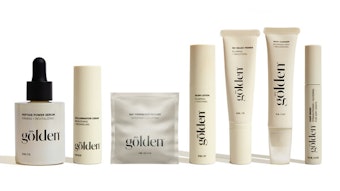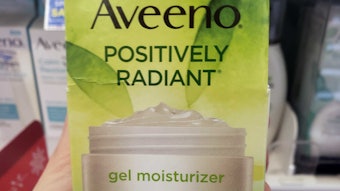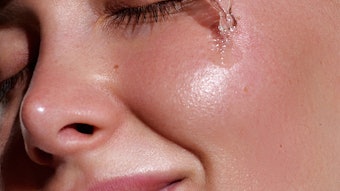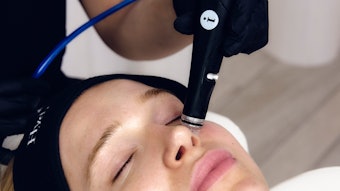As the movement for environmentally friendly personal care continues to advance, an ancient approach to well-being has resurfaced with perfect timing. Ayurveda is a holistic health care philosophy that emphasizes a balance in mind, body and soul. The word ayurveda is part of the Sanskrit language that translates as “the science of life.” While consumers continue to seek eco-friendly routes in health and hygiene, this archaic science may be just what formulators need to (literally) spice up formulations.
According to Sonia Boba of Alcanz International LLC, the distributor of ayurvedic line Kama Ayurveda, ayurveda is a “holistic principle to living—the whole idea is to ensure the body is naturally in sync with nature and that the body and mind are well.”
Customary Care
“A typical ayurvedic formulation may contain more than twenty herbs and spices with specific roles,” explained Boba. Ayurveda takes formulation to a more individualized level, as products and medicines are concocted based on body type or dosha. The three dosha types are vatta, pitta and kapha.
According to the National Center for Complimentary and Alternative Medicine, doshas are said to represent one or two of five basic elements: space, air, fire, water and earth. These doshas are based on a combination of internal and external qualities, personality traits and mental characteristics. A person may have more than one dosha but usually one is dominant.
The kapha body type is designated as heavier-set with thick hair and coarser features. This skin typically is affected by an abundance of oil and acne, and spicy ingredients such as cayenne, cinnamon and black pepper are used with this body type to help ease congestion to slow oil and sebum output.
On the contrary, the vata type exhibits a slender frame with naturally dry, delicate skin. To treat dry hair and skin in this body type, a serum made from pungent and sweet herbs such as sesame oil and saffron is recommended.
According to Boba, while the kapha and vata are opposite one another, the pitta type falls in the middle, exhibited by a medium physique. If this body type experiences sensitive skin, a facial mist of rosewater infused with jasmine or lavender is suggested.
Targeted to this unique market segment, the Kama Ayurveda line is formulated to apply to all three dosha types. “It’s like a one-size-fits-all concept,” said Boba, who added this approach is in contrast to single, dosha-specific products.
As Boba explained, the skin is the body’s largest organ and it acts as a delivery system for any herbs or oils applied to it. “If you can’t put it in your body, you shouldn’t put it on your body. Just because a product is applied to the skin doesn’t mean it’s only working externally—it’s affecting the entire body, inside and out,” said Boba, expressing a fundamental ayurvedic belief.
Nature’s Spice Rack
According to Boba, several ayurvedic ingredients that are indigenous to India include: sesame, neem and coconut oil, rose, fennel, fenugreek, saffron, oat, cardamom, costus, winter cherry, vetiver, neem, licorice, cinnamon, sandalwood, wheat and oatmeal. Neem bark, for example, is commonly ground and used as an antibacterial and antifungal agent. Licorice is used for its reported antimicrobial properties.
The company’s product line is formulated with ingredients such as saffron, to brighten skin tone; and vetiver, lotus and sandalwood-herbs that may reduce the appearance of acne scars, sun spots and age spots. A blend of costus and cardamom soaked in sesame oil and coconut milk is said to improve skin texture.
Additionally, a mix of herbs processed in sesame oil and milk with indigo (neeli), eclipta alba and gooseberry may soothe dehydrated hair.
Imported Ayurveda
Boba notes that the United States does not currently regulate ayurvedic products. Kama Ayurveda is imported from the Arya Vaida Pharmacy (AVP), located in Coimbatore, India. The pharmacy harvests organic and indigenous herbal ingredients that are tested by the Indian government’s Department of Science and Technology to ensure ayurvedic standards are met.
Boba does not foresee the United States instituting any sort of regulation or protocol for ayurvedic products. “It’s still a very niche philosophy,” she said, “too exotic for mainstream America.” Though consumers may want to adopt a more eco-friendly lifestyle, ayurveda may intimidate them as it is rather complex in scope. “You could study for years and still not touch on everything,” stated Boba.
Nonetheless, ayurveda’s notoriety may receive a boost as the natural and organic craze persists. “We’re demanding truth in labeling—we want to make sure the products we’re using were harvested gently,” said Boba. On a personal level, she added that she hopes Ayurvedic products are more than just a trend but a lifestyle change. “I’m excited and pleased to say that I see ayurveda as being a prime example of going ‘green’,” she concluded.










